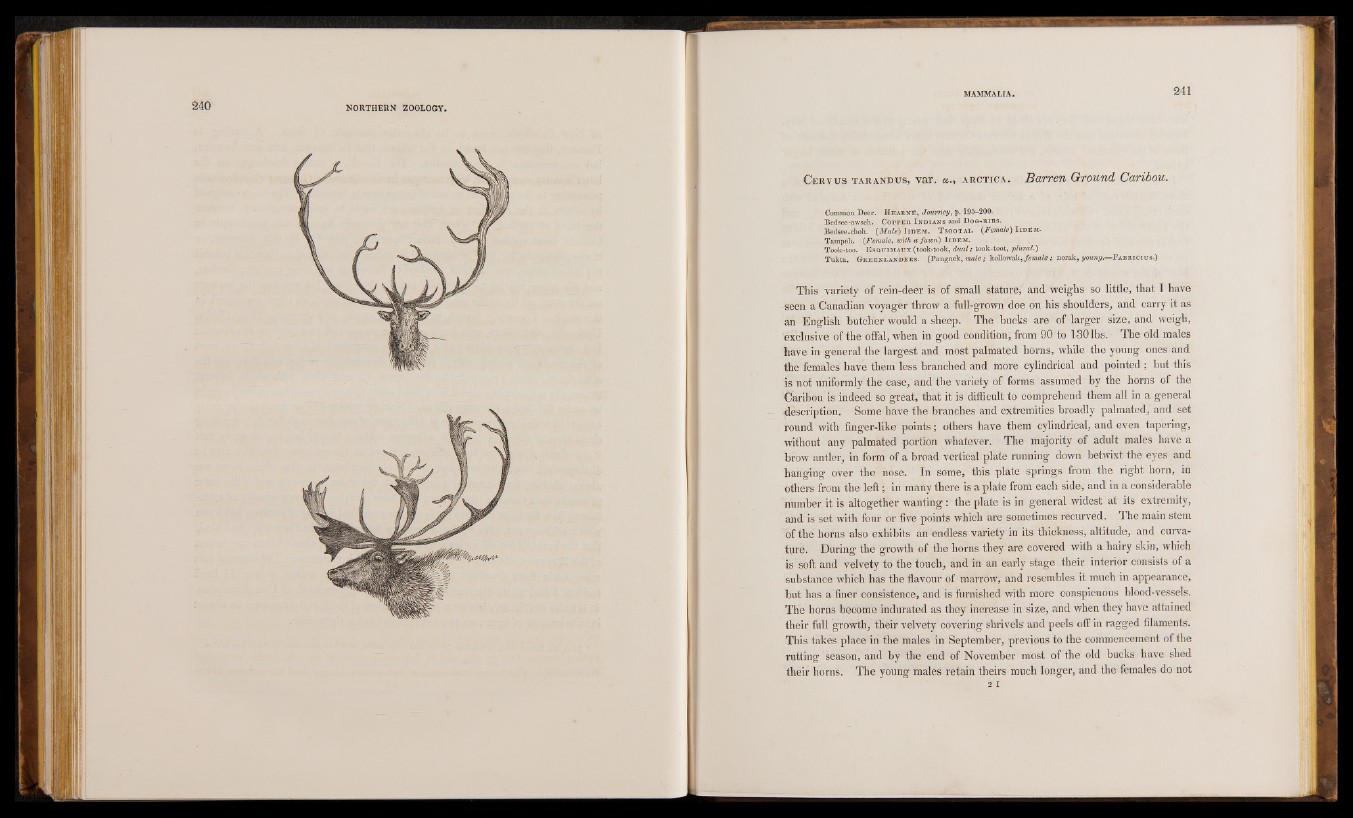
C e r v u s t a r a n d u s , var. a . , a r c t ic a . Barren Ground Caribou.
C om m o n D e e r . H e a r k e , Journey, p . 1 95—200.
B e d se e -aw se h . C o p p e r I n d ia n s a n d D oqtRi b s .
B ed se e -ch o h . (Male) I i d e m . T s o o t a i . ( Female) I id e m .
T am p e h . (Female, with a fawn) I id e m .
T o o k -to o . E s q u im a u x (to o k -to o k , dual; to o k - to o t, plural.)
T u k t a . G r e e n l a n d e r s . (P a n g n e k , male ; k o llow a k , female ; n o r a k , young.— F a b r ic iu s .)
This variety of rein-deer is of small stature, and weighs so little, that I have
seen a Canadian voyager throw a full-grown doe on his shoulders, and carry it as
an English butcher would a sheep. The bucks are of larger size, and weigh,
exclusive of the offal, when in good condition, from 90 to 130 lbs. The old males
have in general the largest and most palmated horns, while the young ones and
the females have them less branched and more cylindrical and pointed ; but this
is not uniformly the case, and the variety of forms assumed by the horns of the
Caribou is indeed so great, that it is difficult to comprehend them all in a general
^description. Some have the branches and extremities broadly palmated, and set
round with finger-like points; others have them cylindrical, and even tapering,
without any palmated portion whatever. The majority of adult males have a
brow antler, in form of a broad vertical plate running down betwixt the eyes and
hanging over the nose. In some, this plate springs from the right horn, in
others from the left; in many there is a plate from each side, and in a considerable
number it is altogether wanting: the plate is in general widest at its extremity,
and is set with four or five points which are sometimes recurved. The main stem
of the horns also exhibits an endless variety in its thickness, altitude, and curvature.
During the growth of the horns they are covered with a hairy skin, which
is soft and velvety to the touch, and in an early stage their interior consists of a
substance which has the flavour of marrow, and resembles it much in appearance,
but has a finer consistence, and is furnished with more conspicuous blood-vessels.
The horns become indurated as they increase in size, and when they have attained
their full growth, their velvety covering shrivels’ and peels off in ragged filaments.
This takes place in the males in September, previous to the commencement of the
rutting season, and by the end of November most of the old bucks have shed
their horns. The young males retain theirs much longer, and the females do not